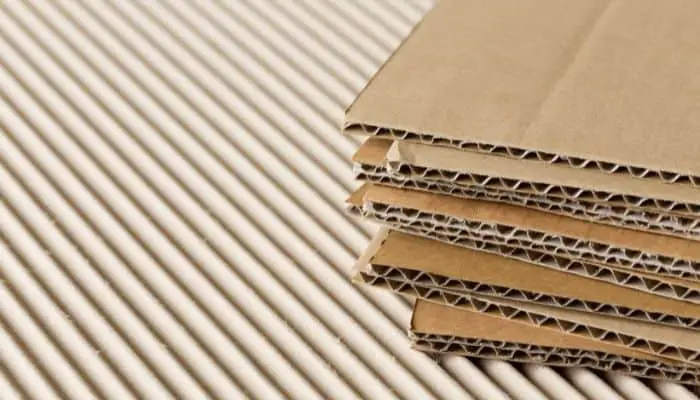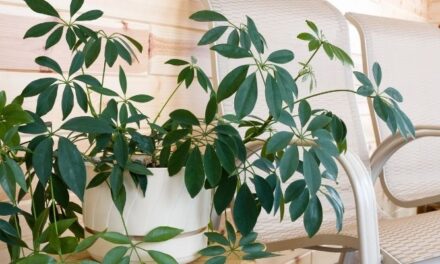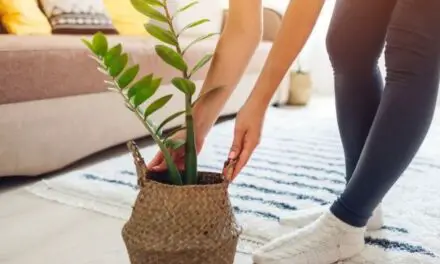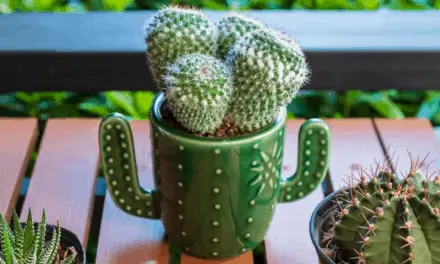Cardboard most certainly has its uses in the garden but if you use it incorrectly or use the wrong type of cardboard, you can easily do more harm than good for your plants.
Table of Contents
Will Roots Grow Through Cardboard?

Yes. Roots will grow through cardboard as long as you water it regularly so that it disintegrates to the point that roots will grow through it.
By the time your plants have grown to the point where their roots will be passing through the cardboard, the cardboard should be soft enough to not put up any resistance.
How Can Roots Grow Through Cardboard?
If you just place cardboard on the ground, roots won’t grow through it.
However, you can create a layered bed in a way that the roots can grow through.
Most importantly, you will need to add water to the cardboard for the roots to be able to grow through it.
Regular watering will soften the cardboard, making it easier to penetrate.
At the same time, regular watering helps the roots to grow, making them stronger and more capable of pushing through.
If you don’t water the plants regularly, they may not make it through the cardboard by the time it decomposes, which takes roughly 3 months.
Adding compost to the top layer of the cardboard can make it even softer.
Combining cardboard and compost can be a great way to create a rich garden.
Plus, adding compost will allow the plants to grow stronger, making them more capable of going through the cardboard layer.
Related Article: Will Compost Burn Plants? (All You Need To Know)
How To Use Cardboard For Growing Plants?
There are a couple of ways that you can use cardboard to improve your garden and grow plants.
Use Cardboard To Create Layered Beds
You can use it to create layered beds to be rich and nutrient-dense.
Layer the cardboard and then cover it with mulch and compost.
Then, till the area whenever you are ready to plant your garden.
Cardboard Helps To Control Weeds
Cardboard is great for reclaiming a patch of land that has been overrun with weeds and grass.
Just lay down sheets of cardboard over the area you want to plant in and lay down some compost on top of the cardboard.
The compost will help to stop the cardboard from drying out from the sun or blowing away when the wind picks up.
The cardboard will block out the light and kill everything that had been growing there, leaving behind a rich, weed-free garden bed for you to plant into.
It’s one of the most effective no-dig options and a great idea if garden beds need to be covered until spring.
For example, you can prepare vegetable beds in the autumn.
Follow up by covering them with cardboard to prevent weeds from growing.
The Benefits Of Using Cardboard To Grow Plants
The biggest benefit of using cardboard for growing plants is that you are upcycling.
You don’t have to buy additional materials to help your garden grow, which is much better for the environment.
Simply grab a box or some other cardboard item to help recycle what you’ve already used.
Using cardboard in a layered fashion can also help you to grow your plants in a much more economic way.
If you are on a tight budget, using cardboard may be one of the more cost-effective options.
The last major benefit of using cardboard is that it can be better for the environment.
Instead of using a harsh chemical or weedkiller, using a bare piece of cardboard prevents weeds from springing up without polluting the soil either.
Disadvantages Of Using Cardboard For Your Plants
Although there are many benefits to using cardboard in your garden, there are some drawbacks too.
Most notably, it can be bad for the environment if you use the wrong cardboard.
Any cardboard with a lot of paint, processing, and tape should not go in your garden.
Also, beware of recycled cardboard.
Recycled cardboard is produced from many types of cardboard, including the highly processed stuff.
And watch out for cereal boxes or any cardboard that has glossy printed images on it.
You won’t want that in your garden.
Just stick to Amazon delivery boxes and other types of brown cardboard that have had all tape and plastic removed.
Cardboard also can be a bit finicky.
As mentioned above, you have to go through an extensive watering process for the roots to go through the cardboard.
If you do not properly prepare the bed and apply enough water, you might find that the cardboard kills your plants instead of helps them.
Final Thoughts
If you add enough water to the cardboard layer, the plant root should be able to penetrate through.
However, the cardboard may be too stiff initially if you do not water it properly.
Because it takes 3 months to decompose, simply placing a dry piece of cardboard on the ground may not help your garden too much if you don’t prepare it properly.
There are ways that you can use a cardboard layer to improve your garden.
For example, you can create a nutrient-dense bed by using compost and cardboard layers.
You can also use cardboard to protect the soil from budding weeds.
In either case, you need to be careful how you use it and select cardboard that is processed as little as possible.




